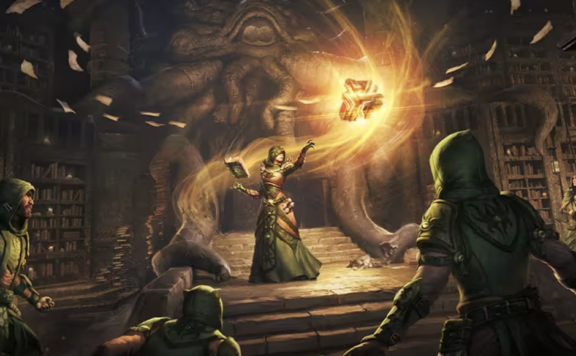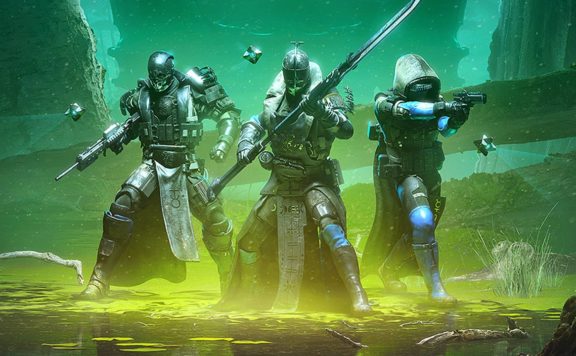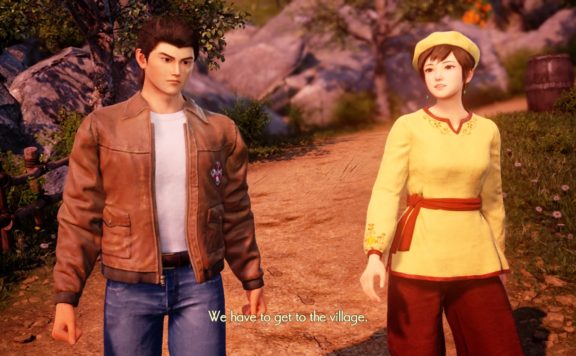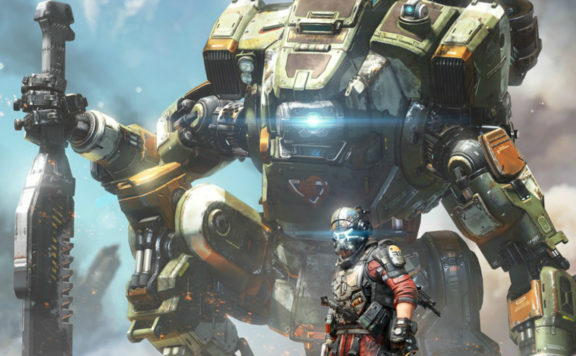This past weekend, several journalists and I were flown out to Las Vegas to cover the inaugural H1Z1 Pro League (H1PL), the first Battle Royale eSports league. Earlier this week, H1Z1 was announced for PS4, and I had the chance to interview Tony Morton, Lead Systems and Combat Designer at Daybreak Games.
A press conference conducted by Jace Hall and Stratton Sclavos (Partner at Vision Venture Partners) was held Friday evening where we were provided some background behind the decision to enter H1Z1 into eSports. After the presser, I had the opportunity to sit down with Chris Schmidt, Head of PR at Twin Galaxies. As an FYI, Twin Galaxies is part of the governance committee for the fledgling league, and you can read my interview with Chris by clicking here.
This presser was the start of a weekend that did nothing but confirm to me one thing: What I’ve been saying for the past several years about the industry, all my criticisms about money and excess defining the industry, was entirely justified. In short, I was right.
I’m not for a second going to sit here and claim that the excess I witnessed here is comparable to the disgusting waste of money we see at E3 (see Microsoft literally lowering the Ford GT supercar from a ceiling, and then getting Henry Ford III to speak at the Forza 6 reveal purely for a marketing stunt). But that itself makes my point. If I was so disgusted by the gross excess of money being wasted by this comparably small event, then the cash spend in the industry as a whole is simply mind numbing.
And remember, that cost is then passed off to you, the consumer. It is this wasteful expenditure that is used by executives to justify the inclusion of microtransactions, season passes, loot boxes, and all manner of anti-consumer business practices, all under the guise of “games are expensive to make.” Don’t believe me? How quick we are to forget the microtransactions in Forza 6 and then made worse with the loot box system of car delivery in Forza 7.

Image via USGamer
But I’m not here to talk about Forza. I’m here to discuss the H1PL event. As I mentioned, the whole event kicked off on Friday evening with a press conference conducted by Jace Hall and Stratton Sclavos. As I expected, we were treated to buzzwords and really given a glimpse into the whole ethos behind the push to get Battle Royale and specifically H1Z1 into eSports.
Stratton kicked things off by discussing pro sports,
eSports is pro sports. A lot of people don’t believe that. We believe that more than you can possibly know. If you look at the entire ecosystem, you’ve got teams and players and fans, you’ve got media rights from broadcasters, you’ve got personal content shows, and you’ve got sponsorships and advertisers. So we broke down our way of raising money for investment, but not for just a team ownership group, [but] for $38 million we raised to be the entire ecosystem with teams, leagues, and of course, original content.
So there we have it. $38 million in capital was raised for the league. Keep this mind for later, but you can already see just how much money they’re pumping into this effort to prop up this league as a legitimate ecosystem. It all seems highly ambitious.
Stratton continued by talking about some core principals behind the creation of the league.
We believe is going to the first league with many firsts. It’s the first Battle Royale pro eSports league. It’s the first league where owners and players are on the governance committee. It’s the first league where a third of the revenues goes to our software publishing partner, Daybreak. A third goes to Twin Galaxy who are running the league. And a third goes to the teams. So from Day One, we wanted to make sure everyone felt like it was ‘our league,’ not a publisher’s league.
Again, keep this in mind. The driving vision here seemingly is this notion of democratizing the league, and not necessarily a top-down approach. He then continued, speaking specifically about eSports.
We think we’re taking this from ‘eSports 1.0’ to ‘eSports 2.0’ where the league is a pro sports league, and the game itself is the instrument by which we execute teams and players being elevated to a whole new profile.
And there was the first mention of this shiny new buzzword, “eSports 2.0.” If it already seems like I’m cynical at this point, you’d be correct. After all, how many executives have we seen throw around meaningless buzzwords in this industry? You’re right. All of them.

But, what exactly is eSports 2.0? For this, Jace Hall provided an explanation by first talking about pro sports (are you noticing a pattern here?)
Everyone is used to eSports being a particular way. And most of it is effectively tournaments and organizations riding the popularity of a game until the popularity ceases and everybody sort of moves on. That’s also exciting and valid to do, but that is not sports. That is not a sustainable thing. Why? Because in that universe, the most important thing is the game. That’s the point of interest. I’m watching a Fortnite game because I’m watching Fortnite things, I like Fortnite, it’s all about Fortnite. and that’s great. However, why do we watch sports? We watch sports not because of the Wilson basketball, or Wilson football. We want people to watch for the players. That’s why — the game is great, the game is fun. We needed a game that is something that people can easily understand and follow and immediately get into the drama and get into without an instruction manual, without having a want to play it, or anything.
There are a couple of things that immediately jumped out at me. The first of which is, like Stratton before him, this obsession with mimicking pro sports. I got the sense that Jace and Stratton fundamentally believe that by following a traditional sports model, H1PL will succeed. However, in the back of my mind, this never made sense.
Pro sports and video games are just different things. Sure, there very well may be overlap and I do not deny that. But these are two fundamentally different industries. Lifting the model from one industry and applying it whole cloth to an entirely different one and expecting success seems suspect and, to be brutally frank, naive.
Second, Jace brings up the notion of why we watch sports in the first place. He mentions that the focal point is the game, Fortnite in his example, and all the things related to that game. But then, he seemingly makes an analogy to pro sports by stating, “We watch sports not because of the Wilson basketball, or Wilson football. We want people to watch for the players.”
Except…this analogy is incorrect. Using his own example, he’s trying to compare Fortnite to a Wilson basketball or football. Except, Fortnite isn’t the Wilson basketball or football. Fortnite is the game of basketball and the game of football. So yes, people don’t watch sports for the Wilson basketball. They watch sports because of the game of basketball and the players.
Third, and this is critically important, he mentions that they needed a game that was easy to understand and follow in order to allow the viewer to easily get sucked into the drama. From experience, I can tell you that this is simply not the case. While H1Z1 itself is a relatively straightforward game to follow if you’re watching your favorite streamer, watching the actual event on Saturday night was confusing and chaotic up until the very end-game played out. I’m not a Battle Royale pro by any means, but I’m not a novice either. And I can tell you that trying to follow 15 teams — that’s 75 players total — over the course of a match was nigh on impossible.

Jace continued, providing an explanation of eSports 2.0,
If you really want to know what ‘eSports 2.0’ is in one sentence, it’s ‘eSports 2.0 is when the primary centerpiece of interest is the player, and not the game.’ eSports 1.0 is the other way around. In both equations, they’re both points of interest, but the weighting of it in eSports 2.0 are the people in this room.
Does this sound like marketing bullshit to you? It did to me. Again, it’s not necessarily the will to see this league succeed that irks me — it’s the whole approach behind it. Throwing all this money behind a game that is, quite frankly, far behind its competitors PUBG and Fortnite.
According to Steam Charts, over the last 30 days, PUBG has an average player count of just over 1.1 million. In the last 30 days, H1Z1 has an average player count of of just over 7000. So as I look at this, it is increasingly difficult to see the return on investment. By all appearances, Jace and Stratton are trying to fabricate an audience for a game that quite frankly doesn’t command one.
Now, yes, Jace mentioned that in “eSports 2.0,” the player is the focus, and not the game. But it’s just as prudent to ask how they can expect viewers and consumers to care about these players when they’re playing a game a fraction of the Battle Royale audience is playing.
And it’s not just player count. Look at the Twitch and YouTube views for these games. As of this writing, according to Steam Spy, there were 14,832 Twitch viewers, and 518,607 YouTube views for H1Z1 yesterday (April 27, 2018). However, PUBG experienced 124,426 Twitch viewers, and 3,203,056 YouTube views. Even though H1PL is being streamed to Facebook, the point is no less damning. There simply isn’t an audience for H1Z1 in comparison to its vastly more popular competitors. Yet Jace, Stratton et al are hell bent on throwing money behind this league. Again, keep in mind that I’m not criticizing the game. I’m criticizing the whole “eSports 2.0” push.
This extends to the events surrounding the inaugural match on Saturday night. There was a tailgating party with celebrity chef, Leah Cohen. No, I’m not joking. You could tell they wanted to cultivate this atmosphere of a pro sporting event. But again, how do they go about it? They throw money at it. As media and, more importantly, as a consumer, the whole thing reeked of desperation borne out gross needless excess.

Come time for the actual event and it’s here where “eSports 2.0” came to a head. Of course, for any such event, you need hosts. Not content with getting any competent host, celebrities were hired. How much did this cost? Who knows? But considering that they got Kristine Leahy (American Ninja Warrior) and Michelle Rodriguez of Fast and Furious fame, I’m guessing they weren’t cheap.

Oh and apparently Tony Gonzalez made an appearance. Again, I’m guessing not cheap.

Then the matches began and, as I mentioned above, it was nigh on impossible to follow the actions of 75 players. Remember, one of the major themes behind “eSports 2.0” is this notion of making the event easy to understand and follow. It just wasn’t. Unless you know the game like the back of your hand and well and truly follow the players, you will be at a loss up until the very end. I’m sorry, but this doesn’t sound like the inclusive democratizing vision laid out to us just one day prior.
In conclusion, “eSports 2.0” is nothing more than “eSports 1.0” with seemingly more needless expense and money thrown at it. I’m going to reiterate that my issue isn’t with the game, rather, with the whole push behind H1PL. “eSports 2.0” is just another useless buzzword, designed to get the layman (and I suspect, investors) excited and hyped about a prospect that I genuinely believe will not survive 6 months. And at that point, my concern will never be with these VCs or publishers. It’ll be with the players and viewers.
The excess I witnessed is a microcosm of the incompetent spending throughout this industry — but it is no less disgusting. It proves to me that my criticisms of the industry over the last several years are correct. It proves to me that we must constantly hold these people accountable and call out their bullshit when we see it.
In short, go play God of War.







